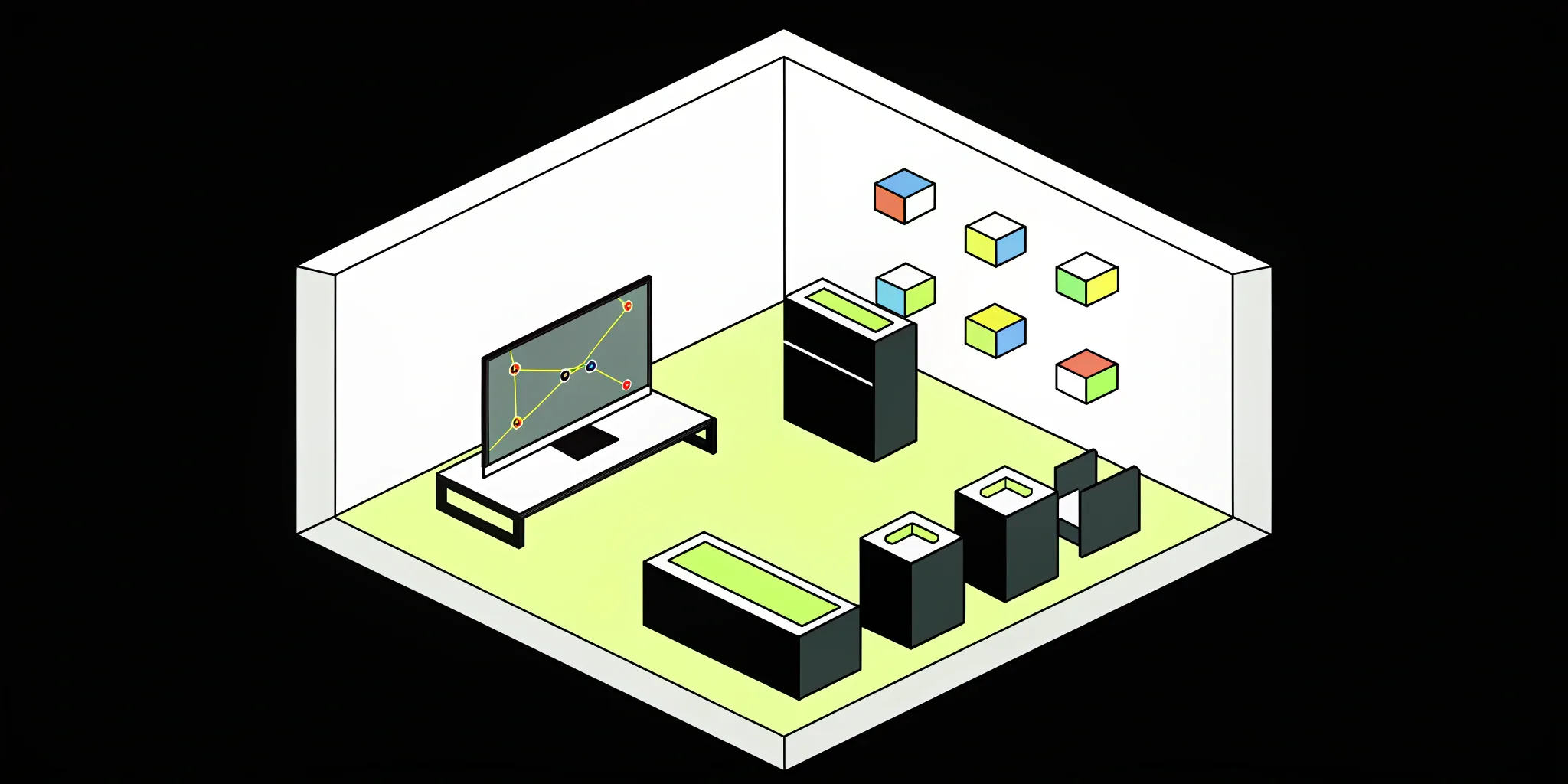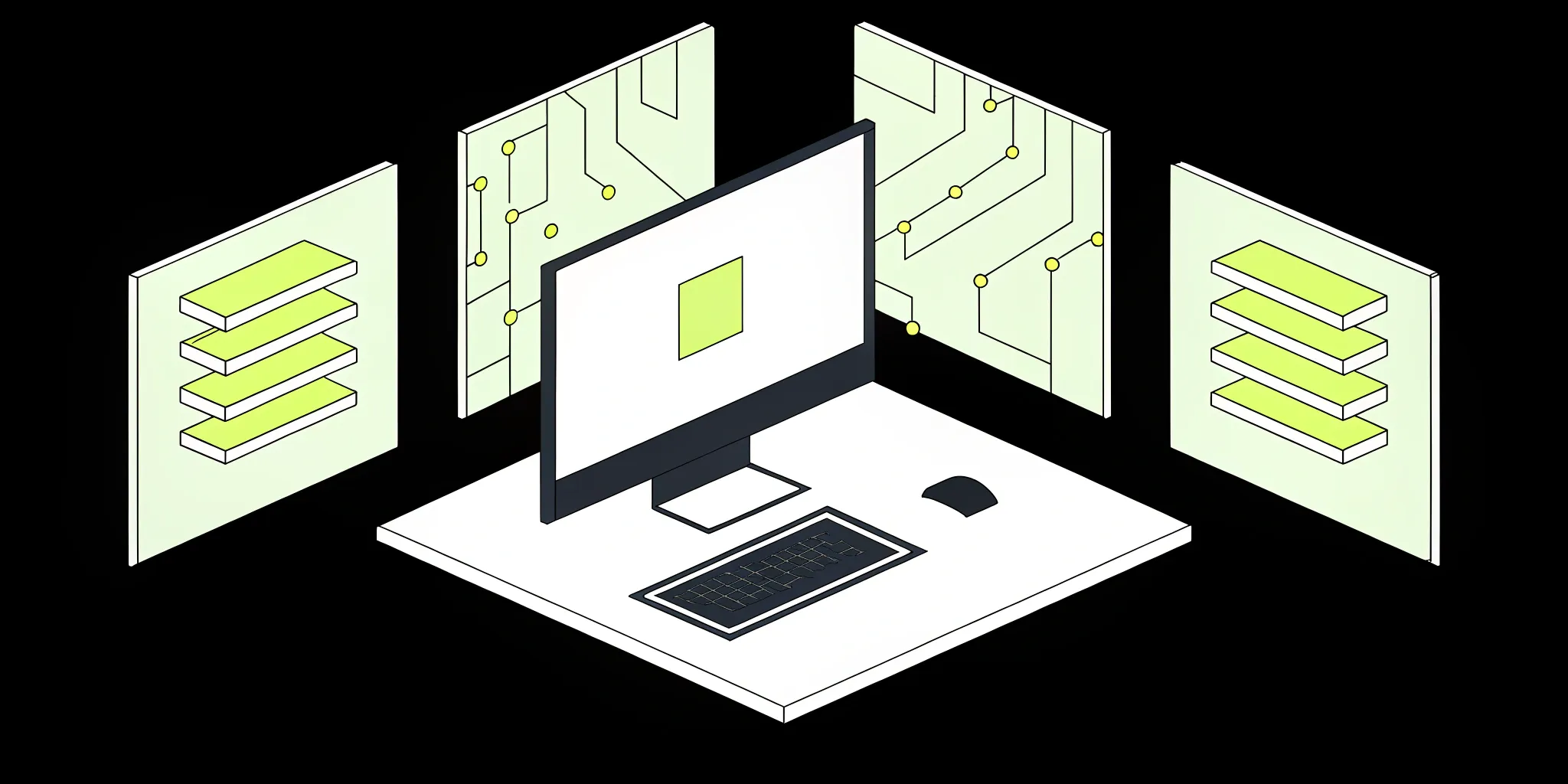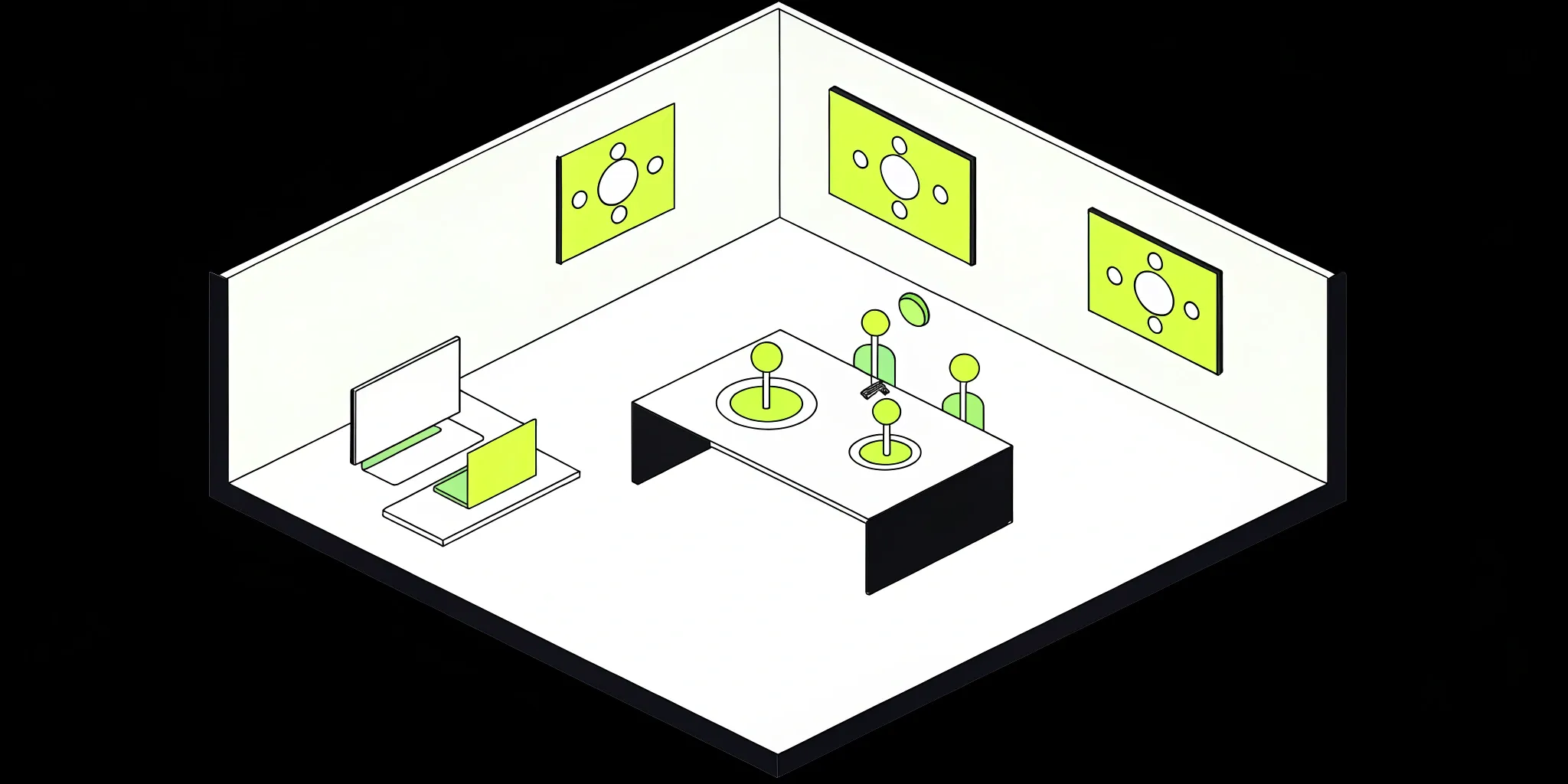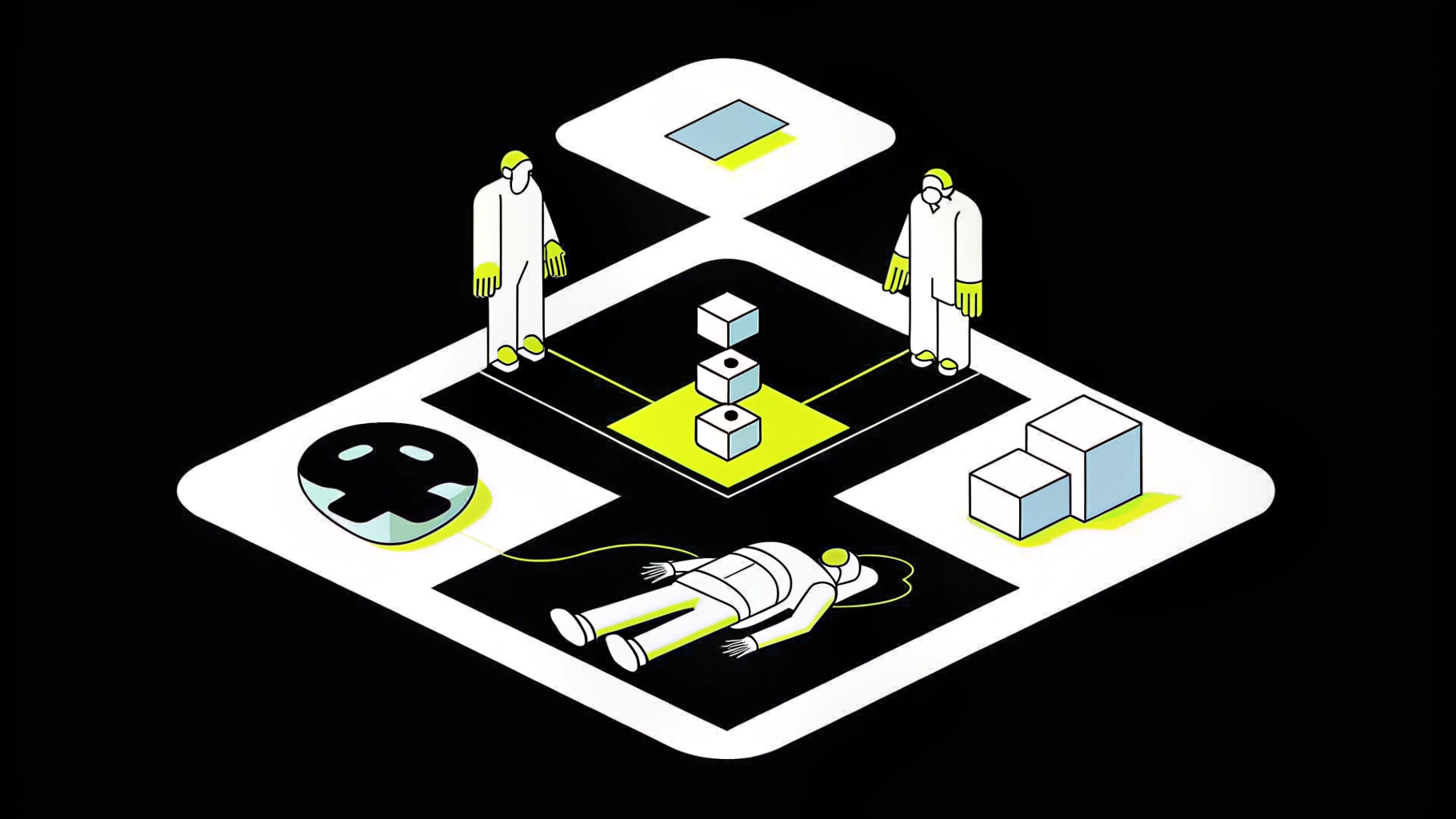7 Best Open-Source RAG Tools for Your Enterprise

Think of a standard large language model (LLM) as a brilliant new hire who aced their exams but has zero on-the-job experience with your company. They have a world of general knowledge but can't answer specific questions about your internal processes or proprietary data. Retrieval-Augmented Generation (RAG) is the onboarding process for that AI. It gives the model access to your company’s entire library of documents, databases, and real-time information, turning it into a seasoned expert. To build this system effectively, you need a solid foundation. We'll explore the best open-source tools for Enterprise RAG, helping you select the right framework to transform your AI from a knowledgeable newcomer into an invaluable team member.
Key takeaways
- Ground your AI in your business reality: RAG connects large language models to your company’s private data, leading to more accurate, context-specific answers. This builds trust and transforms AI from a general tool into a reliable expert on your business.
- Focus on the fundamentals for a strong build: The success of your RAG system depends on three key pillars: clean, high-quality data, robust security protocols established from day one, and a continuous plan for testing and performance monitoring.
- Use RAG to solve real business problems: Move beyond theory and apply RAG to create tangible value. Enhance customer support with accurate answers, build a smarter internal search for your team, or automate tedious document analysis to save time and reduce errors.
What is RAG and why should your enterprise care?
RAG helps LLMs provide better answers by connecting them to this external, proprietary knowledge. Instead of relying solely on its pre-trained data, the model first retrieves relevant information from your sources and then uses that context to generate a more accurate, specific, and current response. For your enterprise, this is a game-changer. It means you can build AI tools that understand your unique business context, from answering customer questions based on your latest product specs to helping employees find information in your internal knowledge base. It grounds the AI in your reality, making its responses more trustworthy and directly applicable to your business needs. Tools like LangChain, widely adopted in the RAG community, make it easier to orchestrate this entire process with modular, production-grade components.
The core components of a RAG system
At its heart, a RAG system combines two powerful technologies: information retrieval and generative AI. The process works in a clear sequence. First, when a user asks a question, the retrieval component scans your designated knowledge base to find the most relevant snippets of information, often called "chunks." The quality of your entire system hinges on how well it performs this search, as the model can only work with the information it's given.
Next, these retrieved chunks are combined with the original question and sent to the LLM as a more detailed prompt. This is the "augmented" part of the process. The LLM now has the specific context it needs to generate a precise and fact-based answer. The effectiveness of this step depends on a well-crafted prompt that properly integrates the new information, guiding the model to the best possible response. Solutions like LangChain are ideal for building dynamic, stateful RAG workflows that track conversation context and improve the reasoning behind responses over time.
How RAG benefits your AI applications
Integrating RAG into your AI applications offers clear, practical advantages that go straight to your bottom line. The most significant benefit is a dramatic increase in accuracy. By grounding responses in your own verified data, RAG helps LLMs answer complex questions with facts, which significantly reduces the risk of the model "making things up"—a problem known as hallucination. This builds trust and makes AI a reliable tool for critical business functions.
This reliability directly contributes to greater operational efficiency. Imagine a customer support bot that instantly provides correct, detailed answers drawn from your latest manuals, or an internal tool that helps your team find precise information buried in thousands of documents. Because RAG connects to your live data, your AI applications always have the most current information without needing to be retrained. Tools like Promptfoo are invaluable here, allowing you to test and compare different RAG configurations and prompts to maximize accuracy, consistency, and performance.
Choosing the right RAG tool isn't just about picking the one with the most features. It's about finding a solution that fits into your existing workflow, handles your data intelligently, keeps everything secure, and can grow with you.
What to look for in an enterprise RAG tool
Choosing the right RAG tool isn't just about picking the one with the most features. It's about finding a solution that fits into your existing workflow, handles your data intelligently, keeps everything secure, and can grow with you. When you're evaluating options, think of it as hiring a new, highly specialized team member. You want someone who collaborates well, is organized, trustworthy, and can handle an increasing workload. A tool might look great on paper, but if it can't integrate with your current systems or meet your security standards, it will create more problems than it solves. Let's break down the key qualities to look for to ensure you find a tool that truly supports your business goals.
Seamless integration with your current systems
Your RAG tool shouldn't live on an island. Since RAG connects your private data sources to large language models, its ability to integrate with your existing systems is non-negotiable. A great enterprise tool will offer robust connectors for your databases, document repositories, and cloud storage. Look for a solution that can easily plug into your tech stack, whether it’s Salesforce, SharePoint, or a custom-built internal platform. This ensures a smooth flow of information and prevents data silos, allowing your RAG application to pull the most relevant, up-to-date context for every query without requiring a massive engineering overhaul. Langflow, with its drag-and-drop UI, excels at visually building and integrating complex RAG pipelines without needing to write extensive code.
Smart data management and organization
The quality of your RAG system's output is directly tied to the quality of the data it can access. The effectiveness of RAG heavily depends on the relevance of the information it retrieves. That's why you need a tool with sophisticated data management capabilities. This includes features for efficient data ingestion, indexing, and chunking. A good tool will help you organize your knowledge base so the system can quickly find the right information. This not only improves the accuracy of the responses but also streamlines your internal processes, leading to a significant reduction in search times for your team. Weaviate, an open-source vector database, is a leading choice here thanks to its powerful semantic search, hybrid ranking, and real-time data indexing features.
Robust security and compliance features
When you connect an AI to your internal data, security becomes paramount. You need to ensure that the RAG application doesn't accidentally expose sensitive information or retrieve documents that specific users shouldn't see. A top-tier enterprise RAG tool must have built-in security and governance features. This means granular access controls that respect your existing user permissions, data encryption both in transit and at rest, and compliance with industry standards like SOC 2 or GDPR. Prioritizing a tool with strong security guardrails is essential for protecting your company’s data and maintaining trust.
Performance and scalability for future growth
The RAG tool you choose today should be able to handle your needs tomorrow. As your company grows, so will your data and the number of users interacting with the system. Data ingestion and query latency can become significant challenges at scale. Look for a tool built on a production-ready architecture that can handle increasing data volumes and user loads without a drop in performance. Ask about its ability to scale resources, manage high-throughput data ingestion, and keep response times low. A scalable solution ensures your AI applications remain fast and reliable as your business expands. Many teams leverage LangChain in production because of its mature ecosystem and robust integrations across LLMs, vector databases, and observability tools, making it a go-to foundation for enterprise RAG stacks.
A breakdown of the top open-source RAG frameworks
The open-source ecosystem gives you everything you need to build a production-grade RAG system—but each tool plays a different role. Some help you orchestrate retrieval workflows, others handle your data indexing or evaluation. Choosing the right stack means understanding what each tool does best and how they fit together.
Here are six of the most important open-source components to know when building enterprise-grade RAG applications:
 1. Langflow
1. Langflow
Visual builder for RAG workflows
Langflow provides a drag-and-drop interface for building and debugging RAG pipelines. It’s perfect for teams who want to prototype quickly, visualize complex chains, or enable non-developers to contribute. Under the hood, Langlfow integrates tightly with LangChain and LangGraph, making it easy to go from visual sketch to scalable production flow.
 2. LangGraph
2. LangGraph
Stateful RAG orchestration
LangGraph helps you build structured, multi-step RAG applications with memory and control flow. Think of it as the logic engine that coordinates what happens when—whether that’s reranking results, calling tools, or refining prompts over multiple turns. Built on top of LangChain, LangGraph enables advanced agent-like behavior with full observability.
 3. LangChain
3. LangChain
The core integration layer
LangChain is the foundational framework for connecting language models to external data, APIs, vector stores, and tools. It provides modular components for retrieval, memory, prompt templating, and more. With broad support for vector DBs and LLMs, LangChain is the glue that holds your RAG pipeline together.
 4. Weaviate
4. Weaviate
Semantic search for enterprise data
Weaviate is an open-source vector database designed for fast, scalable retrieval. It supports hybrid search (text + vector), metadata filtering, and near real-time indexing—making Weaviate ideal for production RAG systems that need fast, relevant chunk retrieval from growing datasets.
 5. Promptfoo
5. Promptfoo
Testing and evaluation made simple
Promptfoo helps you benchmark, test, and compare different RAG configurations before you deploy. It lets you run side-by-side evaluations of prompt templates, chunking strategies, retrieval setups, and LLMs—so you can optimize for accuracy, latency, and consistency. Promptfoo's an essential tool for getting your RAG stack production-ready.
 6. DSPy
6. DSPy
Programmatic prompt optimization
DSPy takes a different approach to prompt engineering. Rather than handcrafting templates, you define tasks and let DSPy optimize prompts and parameters programmatically. DSPy's powerful for building self-improving RAG pipelines and reducing the manual effort required to maintain performance over time.
 How Cake brings it all together
How Cake brings it all together
While each of these tools is powerful on its own, getting them to work seamlessly together in production is no small feat. That’s where Cake comes in.
Cake gives you a composable AI platform that orchestrates your entire RAG stack—from retrieval and prompt optimization to observability and cost controls—using the best open-source tools under the hood. You don’t have to choose between flexibility and security, or between fast iteration and long-term scalability.
With Cake, you get:
✅ Production-ready infrastructure for LangChain, LangGraph, and Langflow
✅ Built-in support for Weaviate and other leading vector databases
✅ Governance, access control, and cost monitoring baked into your stack
✅ Continuous testing and evaluation pipelines with tools like Promptfoo and DSPy
✅ One platform to build, scale, and manage RAG-powered AI apps across your enterprise
Whether you’re building a chatbot, automating document analysis, or supercharging internal search, Cake helps you move faster—without cutting corners on trust, performance, or control.
How to pick the right RAG tool for your enterprise
Choosing the right open-source RAG tool feels a lot like picking a business partner. You’re not just looking for a list of flashy features; you need a tool that fits your team’s skills, integrates with your existing systems, and can grow with you. It’s about finding the perfect fit for your unique enterprise environment. The market is full of great options, but the "best" one is the one that solves your specific problems without creating new ones. This means looking beyond the marketing claims and digging into how a tool will actually function within your day-to-day operations.
Before you commit, it’s smart to walk through a few key considerations. Thinking about your technical needs, resource constraints, security requirements, and the potential complexity of implementation will help you make a choice you’ll be happy with long-term. This isn't just a technical decision; it's a strategic one that will impact your team's workflow and your project's success. A little due diligence now can save you from major headaches down the road. Let’s break down what you should be looking for in each of these areas to ensure you find a RAG tool that truly works for you.
Assess your technical requirements
First things first, you need to define what a "win" looks like for your specific use case. The performance of a RAG system isn't just about speed; it's about the quality of the answers it produces. A RAG tool is only as good as the context it retrieves and the prompt that uses it. To measure this, you'll want to look at a combination of metrics. Think about retrieval precision (did it find the right documents?), context relevance (was the information in those documents actually useful?), and factual accuracy. The goal is to get a final output that is not only correct but also coherent and helpful to the end-user. Before you even look at a tool, outline the key performance metrics that matter most for your project.
Plan your resources and infrastructure
Next, it’s time for a reality check on your resources and infrastructure. RAG applications work by pulling information from your documents and adding it to the prompt for the LLM. This can make your prompts quite long, which can be an issue because LLMs have limited context windows—they can only process so much information at once. If your documents are lengthy, you could run into problems. You need to consider if your current infrastructure can handle the load and whether the RAG tool you’re eyeing has smart ways to manage large documents. Think about the potential costs associated with processing longer prompts and ensure your budget aligns with the tool’s operational needs.
Use this security and compliance checklist
For any enterprise, security is non-negotiable. When you implement a RAG tool, you’re giving it access to your internal knowledge base, which likely contains sensitive information. It's critical to ensure the tool has the right security guardrails in place so it doesn’t accidentally surface documents that specific users shouldn't see. Your chosen framework needs a solid governance framework to manage permissions effectively. Before making a decision, run through a quick checklist: Does the tool support role-based access control? How does it handle data encryption, both in transit and at rest? Does it help you stay compliant with regulations like GDPR or HIPAA? Answering these questions will help you protect your data and your business.
IN DEPTH: AI Governance, Powered by Cake
Evaluate the implementation complexity
Finally, consider how difficult the tool will be to get up and running—and to maintain. The long-term success of your RAG system depends heavily on the quality and freshness of the data it pulls from. If your system retrieves outdated information, it could provide customers or employees with incorrect answers about things like product features or internal policies. These are common challenges in RAG implementation that you can avoid with the right tool. When evaluating a tool, look at how easily it connects to your existing data sources. Ask yourself: How much effort will it take to keep the data synchronized and relevant? A tool with a straightforward setup and simple data management will save your team countless headaches.
How to set up your enterprise RAG infrastructure
Setting up a RAG system is more than just plugging in a tool. It’s about building a strong foundation that can grow with your business. Getting the infrastructure right from the start ensures your RAG application is fast, secure, and genuinely useful. At Cake, we know that managing the full AI stack is key to success, and that begins with a thoughtful infrastructure plan. Let’s walk through the essential steps to get it right.
1. Define your hardware and software requirements
First, get a clear picture of your technical needs. Your RAG system will handle information from various sources, so everything must work together seamlessly. Map out your data landscape: Where does your information live and in what formats? Then, think about scale. How many users will query the system, and what response times are acceptable? Answering these questions early helps you choose the right compute resources and software. This proactive planning is the best way to prevent frustrating compatibility and performance issues down the line, ensuring your infrastructure can handle the load from day one.
2. Choose an integration strategy that works
Your RAG system must connect with your existing technology, not operate in a silo. Since RAG can sometimes struggle with real-time data, your integration plan needs to account for that from the start. Decide how your RAG tool will communicate with your current databases, APIs, and applications. Will it be a standalone service or deeply embedded into your products? Choosing the right integration strategy ensures your RAG system complements your workflow instead of complicating it, making it a seamless and valuable part of your daily operations.
3. Optimize for performance from the start
For a RAG system, speed is everything. A slow response can make even the most accurate answer feel useless. Latency can creep in at several stages—from retrieving data to generating the final answer. If you wait to address performance until after you’ve built everything, you’re in for a tough time. Instead, build for speed from day one. This means selecting an efficient vector database and fine-tuning your retrieval algorithms to be as lean as possible. By optimizing for performance from the outset, you create a smooth, responsive experience that users will actually want to use.
4. Follow these security implementation guidelines
In an enterprise setting, security is non-negotiable. Your RAG application will access a wide range of company data, and you must control who sees what. To prevent the system from surfacing sensitive documents for unauthorized users, you need a strong governance framework in place before you go live. Implement role-based access control (RBAC) to ensure users only access information they’re permitted to see. Establishing clear security guardrails from the start is critical for protecting your company’s information and maintaining compliance.
Overcoming common RAG implementation challenges
Putting a RAG system into practice is an exciting step, but it’s not without its hurdles. While the promise of giving your AI applications access to your company’s vast knowledge base is huge, the path to a successful implementation has a few common bumps. Think of these challenges less as roadblocks and more as checkpoints to make sure you’re building a system that’s robust, reliable, and truly serves your enterprise needs. Getting ahead of potential issues with data quality, scalability, and security from the start will save you countless hours and resources down the line.
It’s the difference between a powerful tool that your team loves and a frustrating project that never quite delivers on its potential. A proactive approach ensures your RAG system not only works on day one but also continues to provide accurate, fast, and secure information as your business evolves. From making sure your data is clean to keeping response times snappy, a little foresight goes a long way. Let's walk through some of the most common challenges you might face and how you can tackle them head-on.
Ensuring data quality and relevance
Your RAG system is only as good as the data you feed it. If the information it retrieves is outdated, irrelevant, or just plain wrong, the responses it generates will be, too. Imagine a customer service bot pulling up last year’s pricing—it’s a recipe for frustration. The effectiveness of RAG truly depends on the quality and relevance of the information it can access.
This is where a human-in-the-loop approach becomes so important. Without human expertise to guide and refine the models, you risk inaccuracies and poor contextual alignment. Regularly cleaning your data sources, setting up validation checks, and having subject matter experts review knowledge bases are essential steps to keep your RAG system accurate and trustworthy.
Scaling your RAG system without the headaches
As your business grows, so will the volume of data you need your RAG system to handle. What works for a small-scale pilot might buckle under the pressure of enterprise-level demands. A significant challenge many teams face is data ingestion scalability. You need a system that can efficiently process and index new information—whether it's thousands of new documents or a constant stream of real-time data—without creating bottlenecks.
Planning for scale from the very beginning is key. This means choosing a vector database that can handle your projected growth, optimizing your data processing pipelines, and building on an architecture designed for expansion. Thinking about these factors early on will save you major headaches down the road and ensure your RAG application remains responsive and effective as you grow.
Managing and reducing response times
In any application, speed matters. Users expect fast, almost instant, answers. RAG pipelines, however, have several steps that can introduce latency, from retrieving the data and reranking it to formatting the prompt and waiting for the LLM to generate a response. Each of these stages adds precious milliseconds, and if you’re not careful, they can add up to a sluggish user experience.
One core issue is that LLMs have limited context windows, which are like viewing frames that can’t always fit an entire document. This means you have to be smart about how you chunk and retrieve information. To keep things moving quickly, you’ll want to optimize each part of the pipeline. This could involve using more efficient embedding models, refining your retrieval strategies, or even caching common queries.
Addressing privacy and compliance concerns
When your RAG system has access to a wide range of internal documents, security becomes paramount. You absolutely must ensure that the application doesn’t accidentally surface sensitive information to users who shouldn’t see it. For example, you wouldn't want an all-hands Q&A bot to pull answers from confidential HR or financial documents.
It’s critical to build your RAG application with a strong governance framework and security guardrails from the start. This means integrating with your existing access control systems, so the RAG application respects the same user permissions that are already in place. By making security a foundational piece of your RAG architecture, you can provide powerful, context-aware answers while protecting your company’s sensitive data.
IN DEPTH: Keep Your Training Data Yours
Setting up effective performance monitoring
Launching your RAG system is the beginning, not the end. To ensure it remains effective over time, you need a solid plan for monitoring its performance. After all, your RAG pipeline is only as good as the information it retrieves and the prompts it uses to generate answers. Without ongoing evaluation, the quality of your system’s responses can degrade as your data changes or new use cases emerge.
Start by defining what success looks like. Key metrics to track include retrieval accuracy (is it finding the right documents?), response relevance (is the answer helpful?), and latency. You can use a combination of automated evaluations and user feedback to get a complete picture. Creating a continuous feedback loop allows you to identify weaknesses and constantly refine your system, ensuring it delivers real value to your enterprise.
Smart ways to use RAG in your enterprise
So, you understand what RAG is, but what can it actually do for your business? This is where the theory meets reality. RAG isn't just another piece of complex AI tech; it's a practical solution that transforms how your organization uses information. By connecting your large language models to your own private data sources, you create AI applications that are not only powerful but also accurate and contextually aware. This is a game-changer for enterprise AI adoption because it addresses one of the biggest hurdles with LLMs: their tendency to "hallucinate" or provide generic, unhelpful answers.
With RAG, you can build systems that provide trustworthy, contextual answers grounded in your company's specific knowledge. Imagine an AI that can instantly pull up the exact clause from a specific contract, summarize the latest market intelligence reports relevant to your industry, or explain a complex internal process using your company's own documentation. This moves AI from a novelty to a core business tool that drives real efficiency. It streamlines data retrieval, allowing your team to stop wasting time searching for information and focus on more valuable work. From enhancing customer engagement to automating tedious document analysis, the applications are vast. Let's explore some of the most effective ways to leverage RAG in your enterprise.
Power up your customer support systems
We’ve all been frustrated by chatbots that don’t understand our questions. RAG changes the game for customer support by giving your AI assistants access to your company’s knowledge base, product manuals, and past support tickets. Instead of giving generic replies, a RAG-powered bot can provide specific, accurate answers that are aligned with your current company guidelines. This means customers get the help they need faster, and your support team can focus on more complex issues. By ensuring your AI provides trustworthy and contextual answers, you can significantly improve customer satisfaction and reduce the burden on your human agents. It’s a win-win for everyone involved.
Build a smarter internal knowledge base
How much time do your employees spend searching for information in different drives, platforms, and documents? A RAG-powered internal knowledge base acts like a super-smart search engine for your entire company. New hires can ask questions about company policies, and project teams can find technical documentation in seconds. RAG systems streamline data retrieval, cutting down on search time and allowing employees to focus on their actual jobs. By connecting your LLM to internal resources like HR documents, project wikis, and strategy memos, you create a single source of truth that empowers your team to find what they need, right when they need it. This makes onboarding faster and everyday work more efficient.
Streamline your content operations
For marketing and content teams, maintaining a consistent brand voice and staying on top of market trends is a constant challenge. RAG can act as a powerful assistant in your content creation process. By feeding it your brand style guide, past articles, and market research reports, you can generate new content drafts that are already on-brand and well-informed. This is perfect for enhanced content crafting and gathering market intelligence. Imagine asking your AI to draft a blog post about a new feature, pulling technical details from engineering docs and marketing points from your latest campaign brief. It dramatically speeds up the content lifecycle from research to final draft.
Automate complex document processing
Industries like law, finance, and healthcare are drowning in complex documents. RAG is incredibly effective at navigating this dense information. For example, it can be applied powerfully in legal scenarios, like reviewing thousands of pages of discovery documents or contracts during a merger. In healthcare, RAG can help clinicians find relevant information from medical journals and patient histories to make more informed decisions. Because RAG retrieves specific, relevant information before generating a response, it provides the accuracy that’s crucial in these fields. This automation of document analysis not only saves countless hours of manual labor but also reduces the risk of human error in high-stakes situations.
Supercharge information retrieval
At its core, RAG is about making information more accessible. Think of it as a universal key to unlock all the data trapped in your organization's various systems. Whether it's in a database, a PDF report, or a Slack channel, a RAG system can find it, understand it, and deliver it to you in a useful format. This breaks down information silos and turns your company's collective knowledge into an active, valuable asset. By implementing a comprehensive AI solution, you can create a more connected and efficient workplace where data-driven decisions are the norm. These systems streamline data retrieval processes across the board, giving your team the ability to find answers and insights instantly.
Your checklist for a successful RAG implementation
Building a powerful RAG system is an exciting step, but it’s more than just connecting a few APIs. A successful implementation requires careful planning and a commitment to quality from start to finish. Think of it like building a house—you need a solid foundation, a well-thought-out blueprint, and a plan for keeping everything in top shape for years to come. This checklist will guide you through the essential steps to ensure your RAG project is built to last and delivers real value. By focusing on these key areas, you can avoid common pitfalls and create a system that is reliable, secure, and truly helpful for your users.
Prepare your data the right way
The foundation of any high-performing RAG system is its data. Simply put, the quality of your output is directly tied to the quality of your input. The effectiveness of RAG heavily depends on the relevance and cleanliness of the information it can access. Before you even think about models and infrastructure, you need to get your data in order. This means cleaning your documents, removing irrelevant information, and ensuring a consistent format. You’ll also need a smart data chunking strategy to break down large documents into digestible pieces that the model can effectively search and use. Taking the time to curate a high-quality knowledge base is the single most important step you can take for RAG success.
Test and validate your system continuously
Once your system is up and running, the work isn’t over. Testing and validation should be a continuous part of your workflow, not a one-time event before launch. RAG pipelines introduce latency at several points, from retrieving vectors to generating the final response, so you need to constantly monitor for performance bottlenecks. Create a comprehensive evaluation framework to measure key metrics like response accuracy, retrieval relevance, and speed. It’s also a great idea to build a "golden dataset" of test queries with ideal answers. You can run this dataset against your system regularly to benchmark performance and catch any regressions after you make changes.
Create a solid monitoring and maintenance plan
A RAG system is a dynamic application that needs ongoing attention to perform at its best. Without a plan for monitoring and maintenance, you risk running into issues like hallucinations, outdated information, and a slow decline in response quality. Your plan should include automated alerts for system health and performance dips. More importantly, it requires human oversight. Implementing a feedback loop where users can flag incorrect or unhelpful answers provides an invaluable stream of data for refinement. This human-in-the-loop process is crucial for guiding the model, correcting inaccuracies, and ensuring it stays aligned with your business goals over the long term.
Implement robust security protocols from the start
Security can't be an afterthought; it needs to be woven into the fabric of your RAG implementation from day one. Your knowledge base likely contains sensitive or proprietary information, and your RAG system could become a vulnerability if not properly secured. It’s critical to safeguard the application with a strong governance framework and security guardrails so that it doesn’t retrieve documents users shouldn't have access to. This means implementing role-based access control (RBAC) to ensure the RAG system respects the same user permissions as your source systems. A proactive approach to AI security will protect your data and build trust with your users.
Always be optimizing for performance
A good RAG system is never truly "finished." There are always opportunities to make it faster, more accurate, and more efficient. Performance optimization is an ongoing process of experimentation and refinement. There are many factors that impact performance, including the choice of embedding model, the similarity search metric, and the underlying LLM. Don’t be afraid to experiment with these components. You might find that a different chunking strategy dramatically improves retrieval relevance or that a new embedding model offers a better balance of speed and accuracy. Adopting a mindset of continuous improvement is key to maintaining a state-of-the-art RAG pipeline.
Related articles
- 6 Best Open Source Tools for Agentic RAG
- Build an Agentic RAG Application: A Complete Guide
- Enterprise RAG, Powered by Cake
Frequently asked questions
How is RAG different from fine-tuning an AI model?
Think of it this way: fine-tuning is like teaching a brilliant expert a new skill or refining their communication style. You're fundamentally altering how the model behaves. RAG, on the other hand, is like giving that same expert a specific, up-to-date library to reference. You aren't changing the expert, you're just giving them better, more relevant information to draw from for a specific task. RAG provides knowledge, while fine-tuning teaches behavior.
What's the most common mistake to avoid when implementing RAG for the first time?
The biggest pitfall is focusing too much on the AI model and not enough on the data. Many teams get excited about the technology and jump straight into building, only to feed the system messy, outdated, or irrelevant documents. Your RAG system is completely dependent on the quality of the information it retrieves. If you don't take the time to clean, organize, and properly structure your knowledge base first, you'll get inaccurate and unhelpful answers, no matter how advanced your model is.
Can RAG work with data other than text documents?
Absolutely. While text is the most common use case, the core principle of RAG—retrieving relevant information to provide context—can be applied to other data types. With the right kind of vector database, you can build systems that search through images, audio clips, and even video content. This allows you to create applications that can answer questions like, "Show me all the product photos that feature a blue background" or "Find the part of the meeting recording where we discussed Q3 earnings."
How do I keep the information in my RAG system from becoming outdated?
This is a critical point and it requires a smart data management strategy. You can't just upload your documents once and forget about them. The best approach is to build an automated pipeline that continuously syncs your RAG system's knowledge base with your live data sources. This means that when a document is updated in your internal drive or a new article is added to your help center, the system automatically processes and indexes the new information, ensuring your AI always has the most current facts.
Do I need a dedicated AI team to build and manage a RAG system?
If you're building a system from the ground up using various open-source components, you will likely need significant engineering and AI expertise. However, that's not the only option. Many companies choose to work with managed platforms that handle the complex infrastructure, integrations, and ongoing maintenance. This approach allows your team to focus on defining the business problem and using the AI application, rather than getting bogged down in the technical details of keeping it running.
About Author

Cake Team
More articles from Cake Team
Related Post

How to Build an Agentic RAG Application

Abraham Sharp

Best Open-Source Tools for Agentic RAG

Cake Team

5 Powerful Agentic RAG Use Cases Transforming Industries

Cake Team

Why 90% of Agentic RAG Projects Fail (and How Cake Changes That)

Skyler Thomas